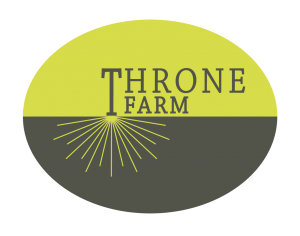This Year’s December completion of harvest is really far too late for the quality of fruit from the later varieties and farmer sanity, however the mills simply could not take apples soon enough! It does however leave a little time before Christmas to assess the quality of this Year’s cider apples and reflect upon how this was achieved. Some of the most important nutritional decisions about next Year’s fruit have already been implemented this summer but we must continue to learn.
Everybody knows that Quality costs but in a price driven world where should we place the optimal quality for cider fruit? The following blog equally applies to Perry Pears!
Quality criteria for “eating” apples have been redefined to suit modern retailing requirements, much to the detriment of taste and nutrition.
Cider apples attain vastly different quality criteria as essentially they are all destined to be juiced. However how much does this process mask quality considerations and engender complacency within the industry? Much cider can be made on “a wing and a prayer” with subsequent blending the “get out of jail free card”.
I have visited numerous vineyards and always been struck by the fastidious attention to detail given to grape quality throughout the growing season, with nutrition at the centre of this.
With Cider apples the number one difference to dessert fruit is the unique contribution of Tannin which is not dissimilar to a comparison between eating and wine grapes. It infers a well-rounded flavour, mouth feel and amber colour to cider but in extremes can add a harsh astringency. As a phenolic compound it protects skin wounds but is lost to the apple once this oxidation process occurs.
Different apple varieties can determine sugar (sweet), acidity (sharp) and Tannin (bitter) characteristics of cider although I believe we can do a huge amount to influence the extent of these through attention to detail whilst growing the fruit.
My thoughts are that we should take a more holistic view in determining the quality of cider apples in accordance to the type of cider that they are grown for. The main things we do at Throne farm to optimise the quality of cider apples are:-
Tree Management
Pruning trees has a great influence upon the distribution of tree resources between vegetative and fruit growth and optimal light interception to improve photosynthesis and therefore sugar production for the fruit
Nutrition
We have developed the Nutrient Dense charter at Throne farm because of the great value that we attribute to Nutrition, which in this discussion can be considered in two contexts:-
Firstly: Nutrition for trees
Optimal nutrition will yield healthy trees. In turn healthy leaves will resist pests and diseases, negating the intervention with chemical sprays. This will also boost the photosynthetic engine of the tree and help reproductive elements for healthy fruit.
Secondly: Nutrition for fruit
Many texts in cider production advocate minimal nutritional inputs within cider orchards on account of their subsequent effects upon the fermentation process, but these can be controlled in other ways. This may be a reference to traditional standard orchards where grazing livestock contribute to recycling nutrients and trees are planted less intensively. However the same texts tend to only refer to the so called “major” minerals of Nitrogen, Phosphorous and Potassium. We take a far broader consideration as there are Twenty Two other macro nutrients such as Calcium, Magnesium and Sulphur. Let’s not forget that the atomic table contains an additional Sixty Seven elements, many of which are known to have some value in nutrition. Extensive soil, leaf and fruit testing leads us to targeting a balance of all macro nutrients in our cider fruit and it is important to remember that an excess of elements in fruit can be worse than a deficit. We can tailor sugar levels with use of foliar potassium and sulphur and influence acidity levels in fruit.
Harvesting
Timeliness of harvest is vital to ensure fruit is at its optimal ripeness and the use of starch testing and refractometers is vital to achieve this.
If we use bittersweet varieties predominantly for their Tannins then surely it is imperative that we preserve their levels within the apples. Work conducted for the NACM showed that Tannin losses of 15% can be encountered with rough harvesting and cleaning, without even taking into account delayed pressing of fruit. Although economics and planting systems may not allow for hand picking, harvesting systems should be geared around gentle handling and real time pressing. This is one major advantage of our set up at Throne Farm.
So as you can see, this is a debate that has many variable factors.
I may be quite prescriptive with my views but it is important to remember, whatever the type of cider that you prefer to make, it’s vital that you carefully define the quality of fruit required.





